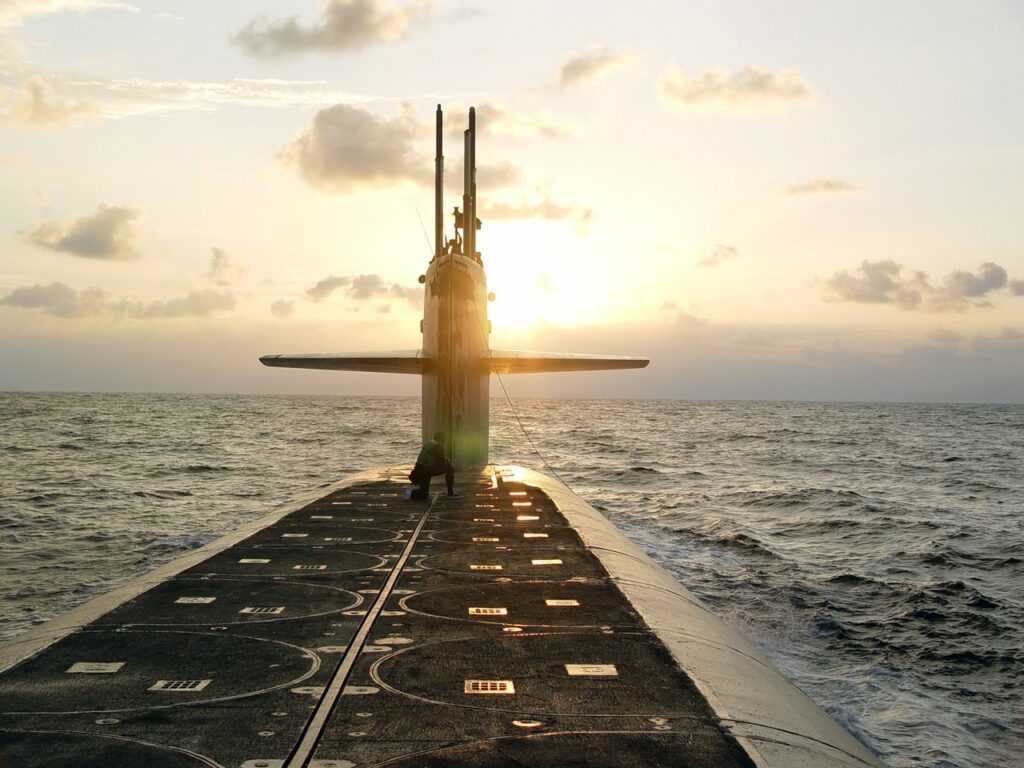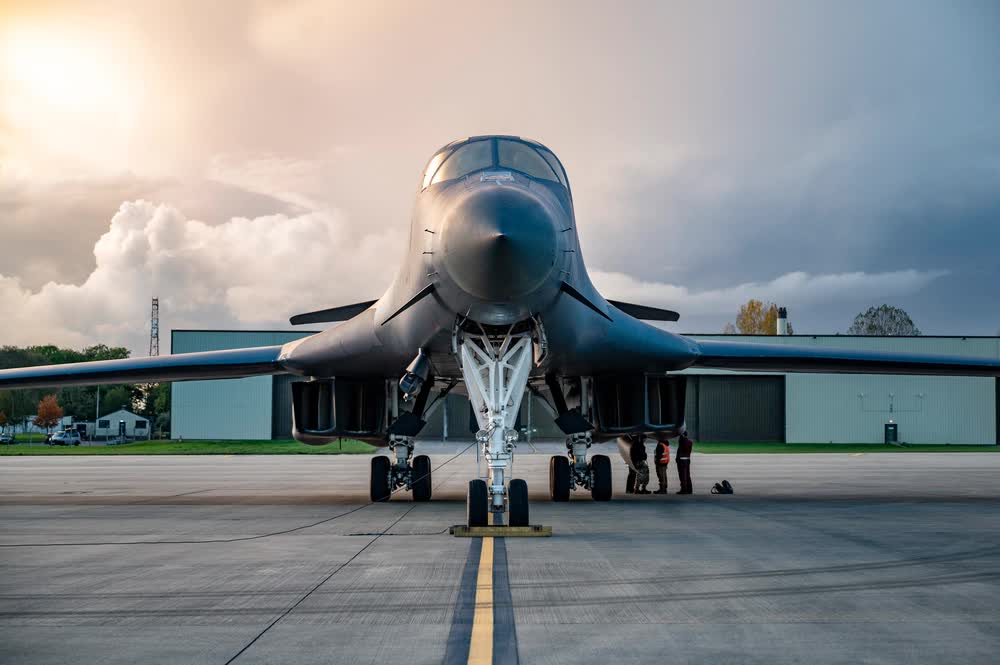America’s nuclear triad is an essential part of the military’s “mutually assured destruction” nuclear deterrence doctrine. The concept behind the triad is simple, even if maintaining it isn’t. In theory, it means diversifying the nation’s nuclear delivery portfolio, effectively ensuring no nuclear attack could neuter America’s nuclear response.
Put simply, the triad promises America will respond to a nuclear attack with a massive volley of its own nukes — in a nation level version of saying, “if we go down, we’re taking you with us.” Unsettling as that concept may seem, it’s proven effective enough to prevent the use of nuclear weapons in any conflict since the second atomic bomb was dropped on Japan on August 9, 1945.
Despite significant economic and diplomatic efforts, it’s beginning to seem all but inevitable that nations like Iran and North Korea will eventually develop nuclear capabilities, giving America’s nuclear triad renewed purpose and importance. These aggressive nations are no stranger to fiery rhetoric, but it’s unlikely that either would execute a nuclear strike against a nation that could effectively wipe them off the map with a nuclear launch of its own in response.
So how do we guarantee (assure) the destruction of a nuclear opponent effectively enough to keep them from utilizing nukes against us? With America’s nuclear triad.
Why is it called a “triad,” and why do we need three ways to nuke our enemies?
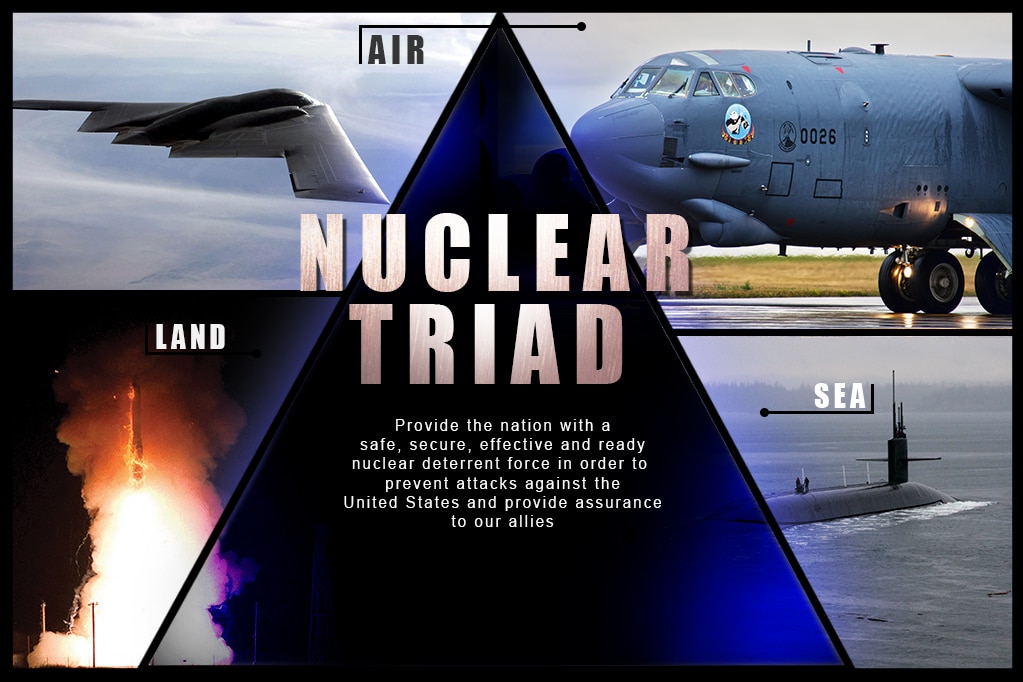
The simple answer is that there are three distinct elements that make up the nuclear triad that can be easily characterized as land based, sea based, and air based. The slightly more complex answer is that America’s nuclear triad, like a three-legged chair, can be seen as effectively inter-dependent. Removing one leg of the triad would make it easier for America’s opponents to focus their efforts on the remaining two and increase the chances of them being neutralized in a nuclear conflict. If you remove one leg from a three-legged chair, the chair will topple over.
As we discussed before, America’s nuclear triad is the crux of the nation’s nuclear deterrence strategy. The U.S. tends to keep a “2nd strike” mindset — operating under the assumption that the U.S. would never be the aggressor that launched the first nuke, but is prepared to respond in volume if anyone else does. That concept is the very definition of mutually assured destruction.
ICBMs
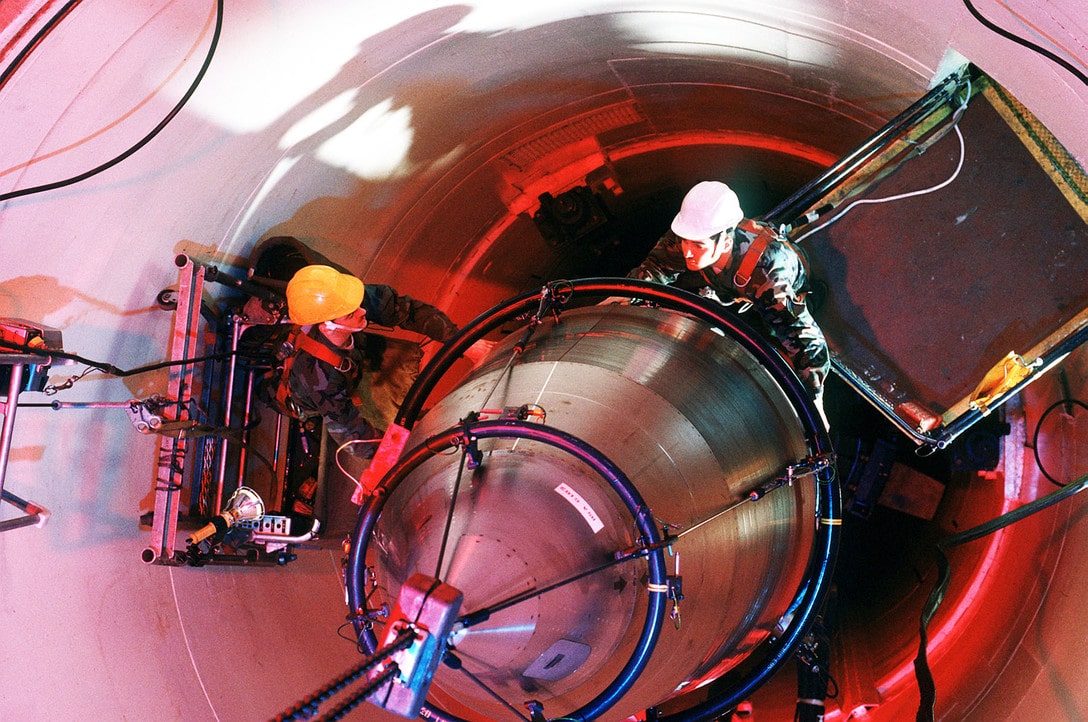
While the idea of massive, nuclear tipped ballistic missiles tucked away in underground bunkers may sound like a remnant of the Cold War, many of those same missiles remain on duty in hardened silos across multiple U.S. states. America currently maintains around 450 of these launch facilities, with 406 active Minuteman III nuclear intercontinental ballistic missiles (ICBMs) stored within them.
Each of these missile platforms carries either a W87 or W78 nuclear warhead with yields ranging from 300 to 350 kilotons. To give you a frame of reference in terms of destructive capabilities, the atomic bomb dropped on Hiroshima in 1945 had a 15 kiloton yield.

However, the Minuteman III is far from the biggest kid on the nuclear block, with Russia’s RS-28 Sarmat claiming the title at an astonishing 50 megatons divided among up to 10 MIRVs (Multiple Independent Reentry Vehicles). Broken down into the same unit of measurement as we used for the Minuteman III, the Sarmat delivers 50,000 kilotons of nuclear energy to its targets — a size Russia’s states owned media outlets famously characterized as “capable of wiping out parts of the earth the size of Texas or France.”
Those lofty numbers are misleading, however. The yield of individual weapons are almost entirely a moot point (despite Russia’s attention-grabbing efforts) because a single nuclear launch would invariable result in a full scale nuclear exchange. Russia’s RS-28 (also knows as the “Satan II”) could be likened to a .50 caliber round, while America’s Minuteman III’s may seem more like shotgun pellets. The method of delivery varies, but when you’re hit by either, the outcome is the same.
Submarine Launched Nuclear Weapons
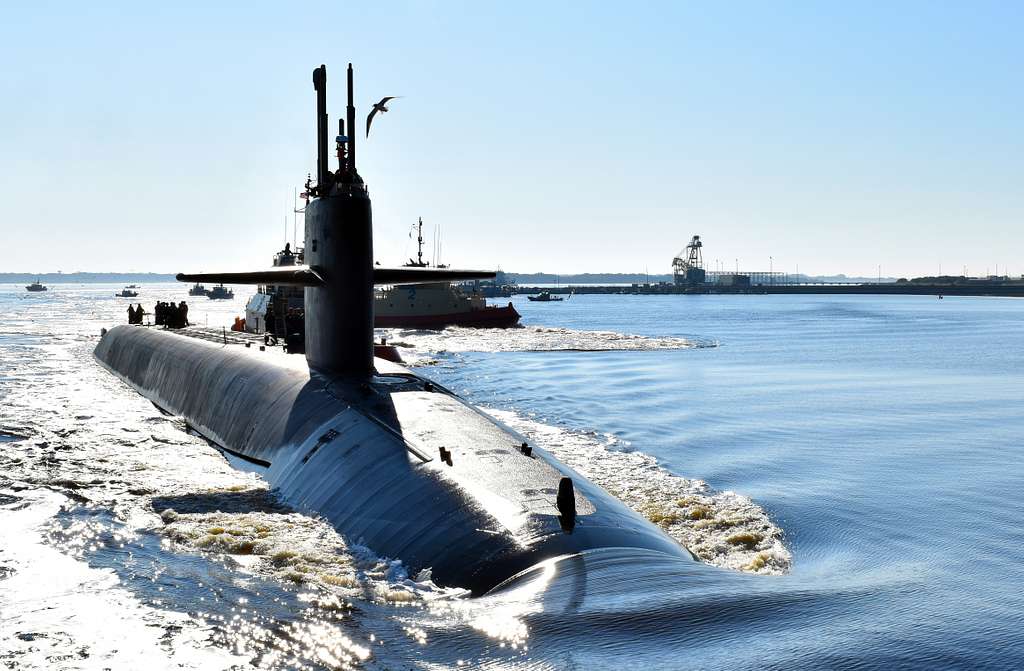
The United States maintains a fleet of 14 Ohio-Class ballistic missile submarines, lovingly referred to within the Navy as “Boomers.” These stealthy submarines represent the most survivable leg of America’s nuclear triad, because finding, engaging, and neutralizing these subs would be nearly impossible during a nuclear engagement. Each of the 14 subs that make up the under-sea leg of the nuclear triad carries 20 submarine launched ballistic missiles, primarily the Trident II D5, which can be equipped with warheads ranging in yield from 5 to 455 kilotons.

These submarines were designed from the ground up to serve on extended deterrent patrols, with large logistics hatches to allow for rapid replenishment at sea and two full crew sets. Each Ohio-Class sub spends an average of 77 days at sea, largely submerged throughout, and returns for 35 days of maintenance. The two crews rotate patrols to ensure these subs can consistently and reliable remain hidden at sea to respond in the event of a nuclear attack.
America’s Ohio-Class subs are considered virtually undetectable, which when coupled with their massive payload capabilities, makes for a serious one-two nuclear punch.
Nuclear Capable Aircraft

The third leg of America’s nuclear triad is comprised of two very different types of aircraft: The sleek and stealthy B-2 Spirit, colloquially known as the stealth bomber, and the mighty B-52 Stratofortress, commonly called the BUFF (Big Ugly Fat Fella is the PG version of the acronym) by those who work in or on the platform.

The B-2 Spirit is a multi-role heavy payload bomber capable of penetrating deep into contested airspace do deliver ordnance with a level of precision that was unheard of in previous large-scale conflicts. This flexible platform is primarily used in current conflicts as a means of delivering conventional ordnance, which means America’s B-2 pilots have real combat experience to pull from if ever they’re called on to deliver nuclear weapons–giving this aircraft and its crews a significant leg up against the competition.
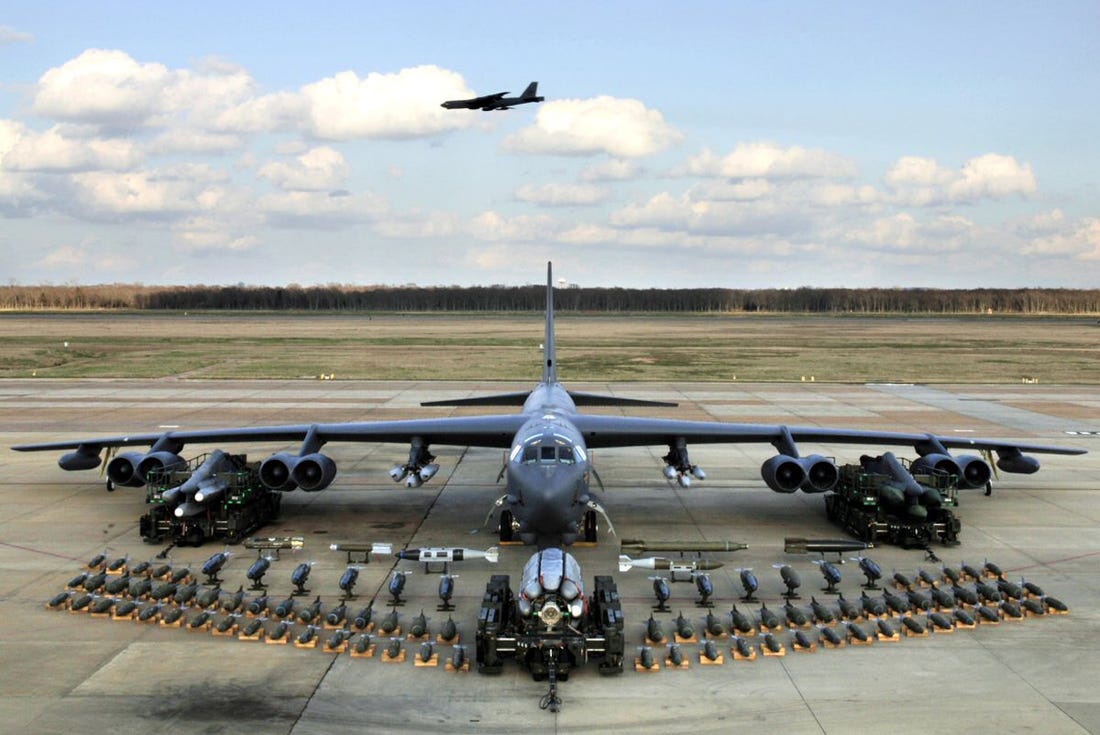
The B-52 Stratofortress is effectively the opposite of the B-2: It’s big, it’s slow, and it’s easy to spot on radar. But what’s made the B-52 such a valuable bomber asset was its forward-thinking design and flexible payload compartment. Despite flying since the 1950s, America’s B-52 fleet is expected to remain in service for decades to come, thanks to the modern advent of nuclear cruise missiles and standoff weapons that allow the B-52 to deploy nukes while remaining outside of contested airspace. The mighty BUFF may be the oldest heavy bomber in the Air Force’s stable. it will continue to fly after bombers that were built to replace it are decommissioned, including the aforementioned B-2, which is slated for retirement as its successor, the stealthier B-21 Raider, begins rolling off assembly lines later this decade.
This article was originally published 6/23/2020
Feature photo courtesy of the U.S. Navy
